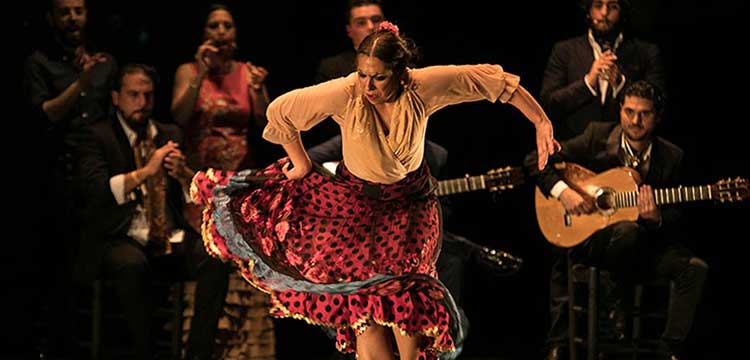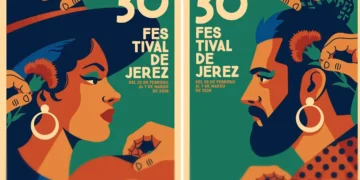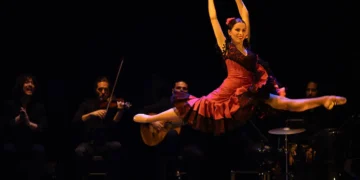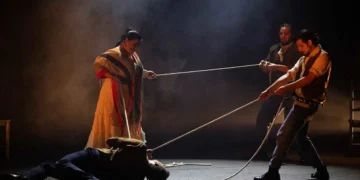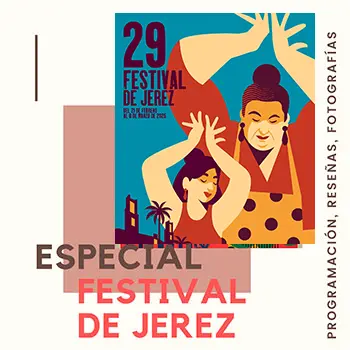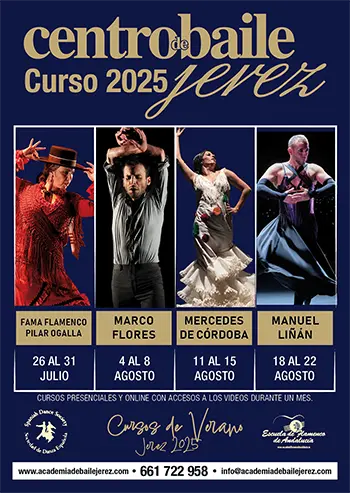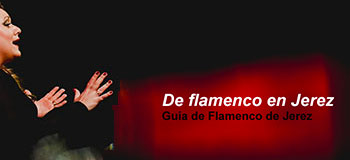FUENSANTA LA MONETA – GRANADA (video / photos / review (spanish))
Special collaboration: PACO CORTÉS – Special Festival de Jerez
Fuensanta La Moneta exhibits her hypnotic dancing in a show not always well-paced and that was too long
Silvia Cruz Lapeña
In her show “Granada Sólo Tiene Salida por las Estrellas”, Fuensanta la Moneta focuses on her hometown with a loving gaze and a critical view. The affection is shown through her dance, and the artist is reflected in the title of the show, a verse of Lorca’s from the “Habanera Imposible” of Carlos Cano in which the paradox of a blessed city that lives “so imprisoned within itself” is explained.
That was the idea, to show a place referenced from other points of view taken from Lorca and Morente, but also other sources. And Moneta began well with that habanera and then bulerías, exhibiting her entire repertoire of movements, which is vast, and her capacity for communication with the audience, which is considerable. Then, came the alegrías and with that repertoire, along with the selection of an impeccable back-up group, the dancer showed Granada beyond the tragedy and the legends, and with her dancing as translator, she highlighted a city with subtleties and sparkle.
On the backdrop were very pertinent images to construct the idea of a different Granada, more complete. The visual universe of José Val del Omar for example, was perfect for a portrait of this city that she interprets, not always a picture post-card but just as intense. Not all her companions understand the use of this visual resource, we’ve seen it in this festival, and at times the spectator is thrown off more than bolstered by the message. This was not the case of Fuensanta who also saw fit to recall Mario Maya in several ways, thank you!
One way was by bringing guitarist Paco Cortés, one of the musicians of “Camelamos Naquerar” from 1976, who filled the part of living memory, so necessary, not only in flamenco. Surrounded by the young talented interpreters, he was at the center of one of the most moving moments of the night when he played soleá. But the spirit of Maya was not limited to the beautiful participation of Cortés, who also accompanied the alegrías with which verses were recalled from other parts of “Camelamos Naquerar”, Pepe Heredia. And Moneta, respectful, knowledgeable and capable of any curve, exhibited a verticality the maestro Maya would have approved of.
But after those brilliant moments, the connection weakened when it took too long to return to the stage for soleá. She was generous, because she left time for her back-up people to play, sing and dance, but those very long absences short-circuited the story that had begun so well. And it made little sense that there would be such long pauses without her, because she’s the star and because seeing her dance is somewhat hypnotic. Fuensanta has temperament and equilibrium, she’s capable of controlling her tremendous strength, she doesn’t abuse her resources and is capable of connecting with the audience because she’s a dancer who enjoys what she does.
But in the end, we were left with a show that was too long, which hurt the rhythm of the work and the effect on the portrait of Granada that Fuensanta wanted to offer, and since she’s smart, she rounded off with a generous set of tangos from her town with which she again showed how well she dances.
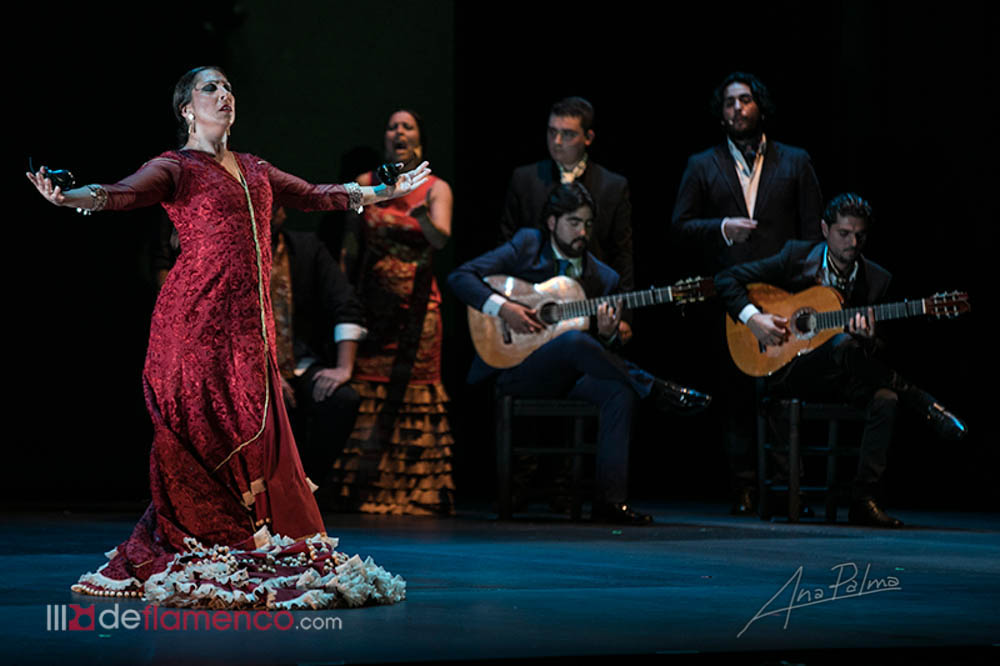
Discover more from Revista DeFlamenco.com
Subscribe to get the latest posts sent to your email.


